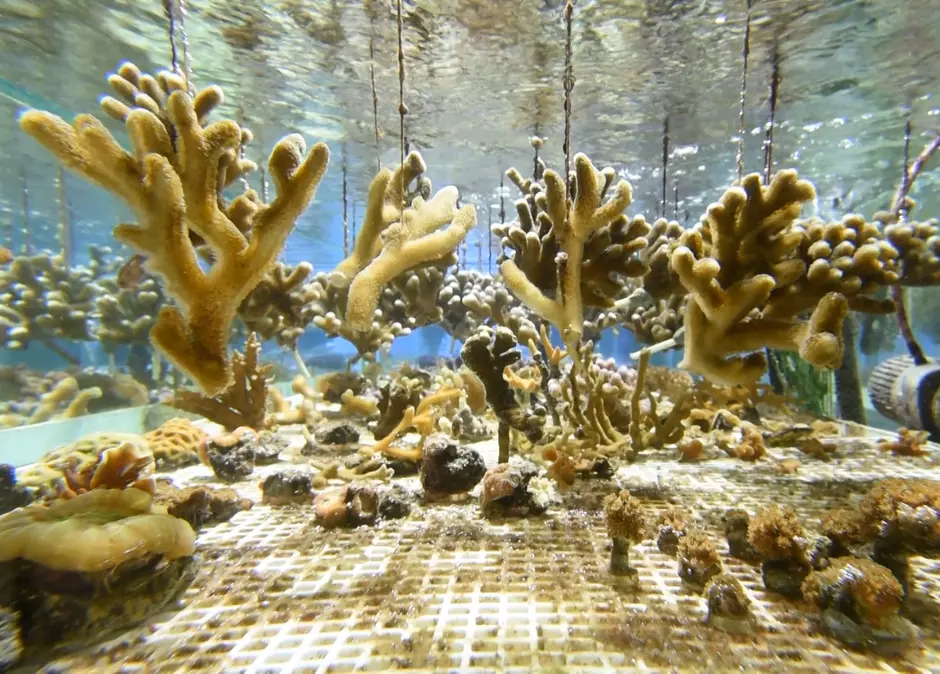
Environment & biodiversity
- Location
Monaco - Sponsor
Manuel Nardi - Grant
€100,000 to the Board of Directors meeting of 17/05/2021
Project leader
The vocation of the Oceanographic Institute of Monaco is clear: to promote, cherish and protect the ocean. Since its creation in 1906, it has brought together scientific, political, economic and associative players as well as the general public to achieve this objective. In 2016, during the International Coral Reef Symposium held in Honolulu (Hawaii), the stakeholders present unanimously agreed on the need to consider new solutions to save the reefs. The creation of a World Coral Conservatory is one of them.
Protecting the biodiversity of coral reefs
The ambition is clear: to protect the biodiversity of coral reefs. Today, conventional methods are no longer sufficient.
Coral reefs are in great decline due to climate change. The latest IPCC reports highlight that, by 2100, coral reefs will have shrunk by 70 to 90% with a global warming of 1.5°C, while almost all (>99%) will be lost with a rise of 2°C. Under the combined effect of ocean warming and pollution, coral reefs are now reaching breaking point.
Increasing the percentage of marine protected areas (MPAs) is an important step, but because the change is global, the temperature rise and acidification will not stop at the boundaries defined by MPAs. It seems necessary to develop a new strategy and consider new solutions to save the reefs. The Monaco Scientific Centre and the Oceanographic Institute, with the Prince Albert II of Monaco Foundation, are trying to provide an answer to this problem with the creation of a World Coral Conservatory.
The project relies on an existing network of public and private aquariums spread around the world, which will house a unique collection featuring the majority of species of stony corals (hard corals) known to date, in the form of living colonies. The Conservatory is designed as a centre for resources, research, and scientific study. It is also intended to be a powerful tool for communication and to aid decision‑making.
Scientific and conservation resources for essential habitats and species
At a practical level, the Conservatory will provide scientific and conservation resources for essential habitats and species. Researchers worldwide will have access to referenced and traced biological material, which can be used on site or remotely. There are many potentially interested areas of research: genetics, biology, biochemistry, ocean chemistry, climatology, pharmacy, medicine, aquaculture, etc.
Its aim is also to bring together aquariums from around the world and to create a network of scientific communication and decision‑making tools. The Conservatory is designed as a platform for exchange between the players involved in the research and conservation of coral ecosystems, and to raise awareness among as many people as possible. The final objective is the restoration of the most degraded areas.
The project is led by three coordinators: the Prince Albert II of Monaco Foundation, the Monaco Scientific Centre and the Oceanographic Institute of Monaco, with the support of the Société Monégasque des Eaux and the Veolia foundation.
Coral reefs: an ecosystem useful to man
A coral is an animal that lives in symbiosis with an algae and synthesises to form a mineral skeleton. The algae provides the coral with its food. The coral, in exchange, provides it with shelter. This is “symbiosis”. The animals that form the coral are similar to jellyfish, with one big difference: they construct limestone structures and, despite their small size, have created real ecosystems. Coral reefs are home to 25% of the marine biodiversity in less than 0.2% of the surface of the ocean! They house many species that feed and reproduce there. It's a highly productive environment. They thus provide an essential source of protein for the local diet. In the small islands where land-based farming capacity is very limited, the only animal protein comes from the sea.

